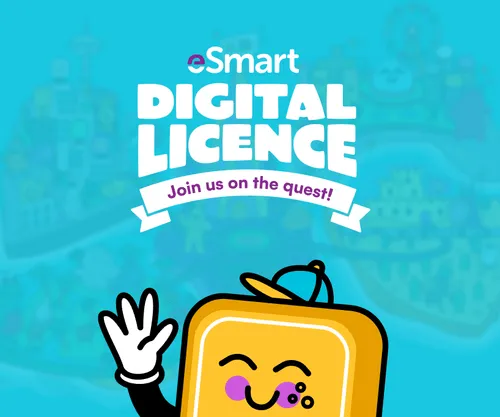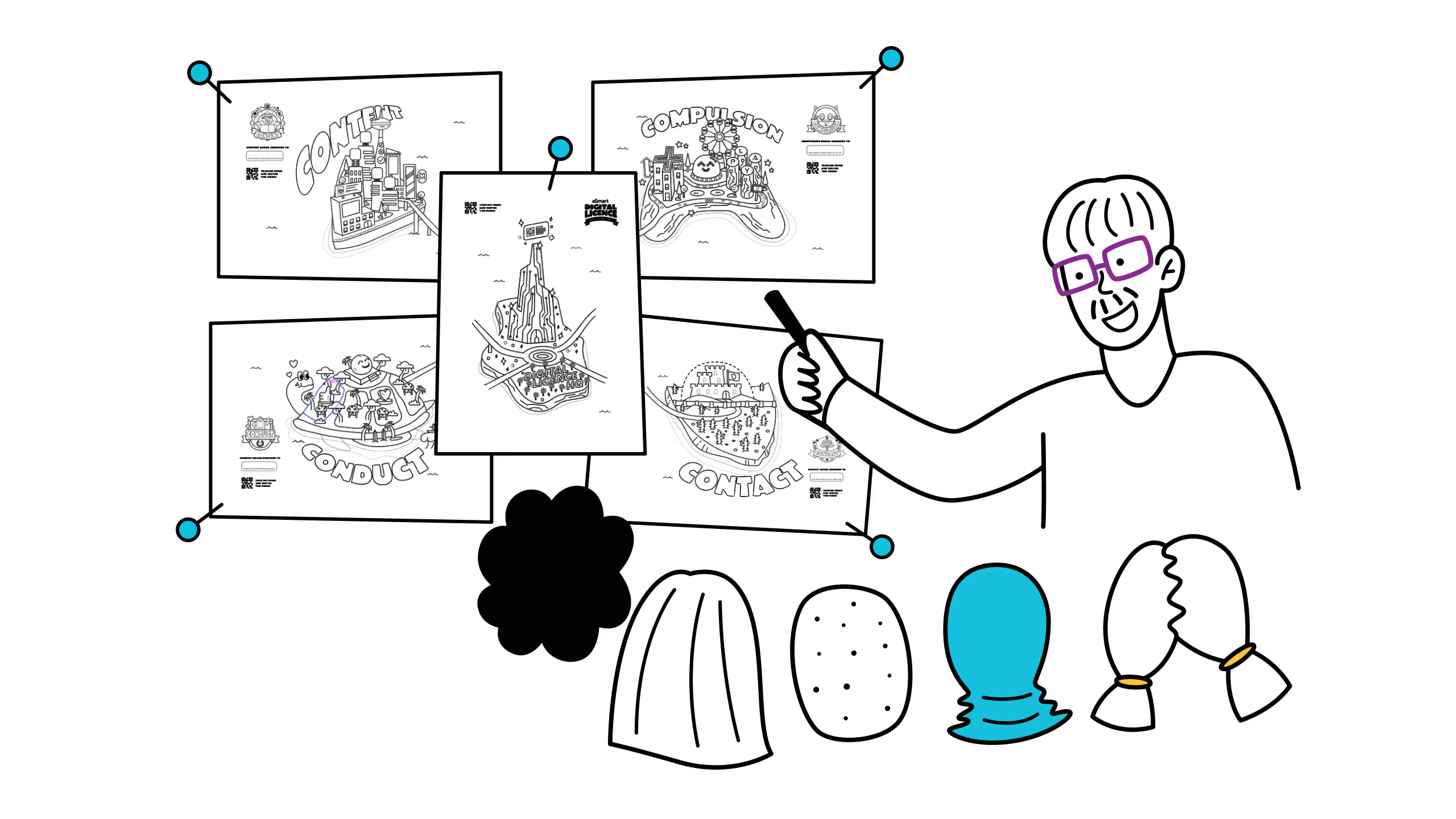eSmart Digital Licence resources
Download the pack

Child Safeguarding Statement
Some resources and activities may prompt a child to remember and potentially share an experience of harm. Make sure you’re familiar with your school's safeguarding policies and procedures so you can confidently report safety and well-being concerns.
Prepare students for the session by discussing: their right to be safe and respected; what to do if discussing online safety makes them feel uncomfortable or unsafe; and how to seek help if they feel or have felt unsafe. Use this resource available on the website.
Introduce the program
Conduct a short session to spark curiosity about the quest and assess learners' digital access and abilities. This will help to better understand the online spaces they navigate by themselves, and with others.
Before you start
Watch video
Welcome to the quest
Learners will meet Digi, who will guide them through their quest to become positive digital citizens. The four islands that represent each of the 4C online safety risk areas will be explained, along with the main goal of achieving an eSmart Digital Licence.
Printables
Introduce the class progress map
Introduce learners to the map of the risk area islands on the class progression map prepared earlier.

Essential
Child safeguarding discussion
Set the stage for the eSmart Digital Licence quest by reminding the class of their right to be safe and respected; what to do if discussing online safety makes them feel uncomfortable or unsafe; and how to seek help if they feel or have felt unsafe.
Recommended sequence:
- Establish children's right to safety
- Begin by discussing learners' right to be safe and respected, both online and offline.
- Explain that if any part of the discussion makes them feel uncomfortable or unsafe, they should know it’s okay to ask for help.
- Share strategies on how to seek help if they ever feel unsafe online.
- Exploring device use and online experiences
- Start a class discussion where learners share their favourite online activities.
- Ask questions like, “Who else loves playing online? What do you like about it?” to engage learners in talking about the devices and platforms they use.
- Setting Learning Goals
- Prompt learners to think about what they’re curious to learn about online safety. Ask questions like, “How can I tell if something is safe to click?” or “What should I do if someone I don’t know talks to me online?”
- Collect their learning goals and display them for the class, or record them for reflection at the end of the program.

